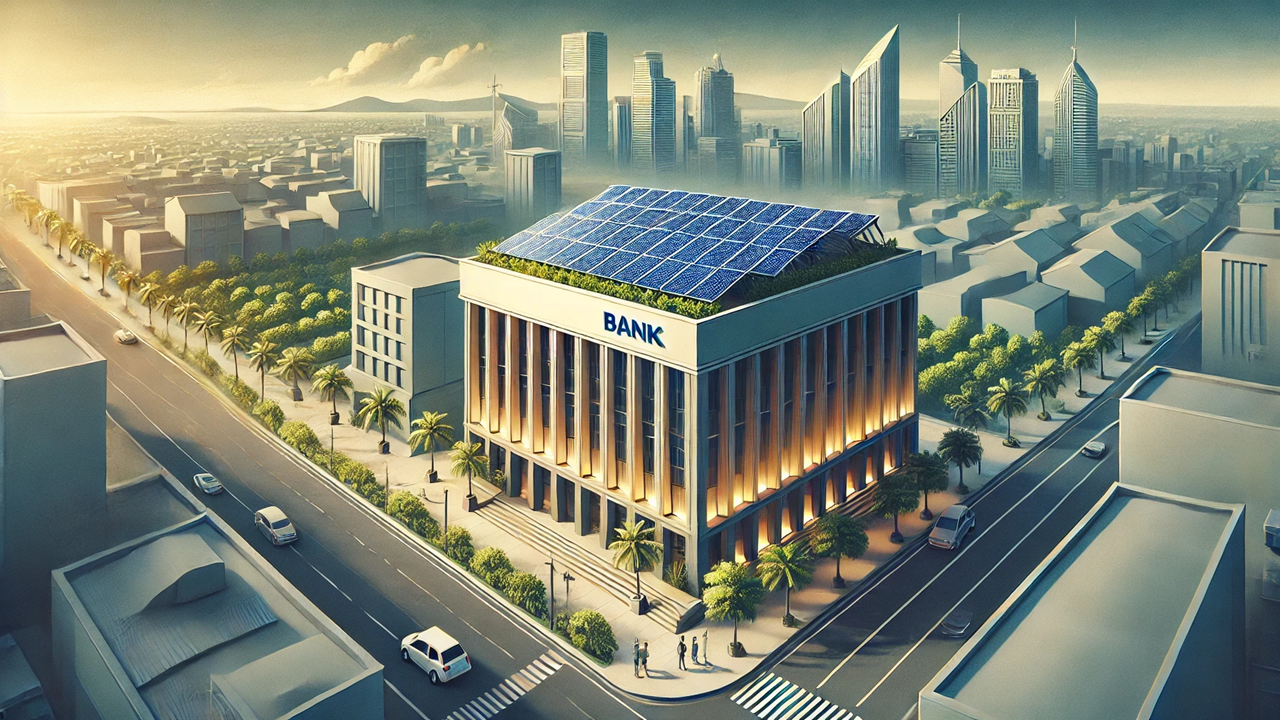Philippine Banks Brace for Climate Transition Risks: Navigating the Low-Carbon Future
A recent report by the World Bank, "A Climate Transition Risk Assessment for the Banking Sector of the Philippines," delves into the financial risks facing the Philippine banking sector as the country navigates the shift to a low-carbon economy. With exposure to high-emission industries like coal power, banks must prepare for the economic repercussions of stricter climate policies. The study emphasizes the need for regulatory frameworks and stress-testing mechanisms to help the sector manage potential credit and market risks. A focus on sustainability and green financing is essential to ensure financial stability amidst this critical transition.

As the global community intensifies efforts to curb greenhouse gas (GHG) emissions and achieve the ambitious goals of the Paris Agreement, the financial sector in the Philippines finds itself at the forefront of a critical challenge. The World Bank’s recent report, "A Climate Transition Risk Assessment for the Banking Sector of the Philippines," highlights the urgent need for the country’s banking sector to manage the risks associated with a transition to a low-carbon economy.
For a country that has experienced steady economic growth, much of which has been fueled by industries reliant on fossil fuels, this transition may pose a variety of challenges, especially for banks. The question now is, Can the sector navigate these risks while contributing to a sustainable future?
Economic Impact: Fossil Fuel Reliance and Transition Pressure
The Philippines, like many developing economies, has depended heavily on industries that consume large amounts of energy from fossil fuels. This includes sectors such as electricity generation, transportation, and manufacturing. These industries are significant contributors to the country’s economic output but are also major GHG emitters.
According to the report, the Philippines currently ranks as the 38th largest emitter of GHG globally, contributing about 0.48% to global emissions. While this figure might seem small, the country’s emission levels are rising, driven largely by coal-based power plants. As of 2020, coal accounted for 57% of the country’s power generation. Reversing this trend to meet global climate goals will require a massive shift away from coal and toward renewable energy, a transition that comes with significant financial implications for the banking sector.
Banks in the Philippines are exposed to these GHG-intensive industries, particularly coal-fired power generation, which accounts for around 8% of the banking sector’s loan portfolios. The report warns that the country’s banks could face credit and market risks as stricter climate policies, emerging technologies, and changing consumer preferences push for cleaner energy sources. If the transition is not managed effectively, some sectors may face severe financial losses, leading to increased non-performing loans (NPLs) and a deterioration of bank asset quality.
Sectoral Impacts: Winners and Losers in a Low-Carbon Transition
While the low-carbon transition poses risks, it also offers opportunities. The report emphasizes that not all sectors will be negatively impacted. For instance, renewable energy sectors such as wind, solar, and hydro are poised to benefit from the shift to cleaner energy. These sectors are likely to experience significant growth, creating new opportunities for banks to finance sustainable projects. In contrast, sectors reliant on fossil fuels, such as coal and gas, are expected to shrink dramatically, with output declining by up to 99% in some cases by 2040.
This divergence in sectoral performance underscores the need for banks to reassess their lending portfolios. By reallocating resources toward green energy and away from carbon-intensive industries, banks can not only mitigate risks but also capitalize on new growth opportunities. However, the report cautions that this transition must be managed carefully to avoid sudden shocks that could destabilize the financial sector.
Policy Recommendations: Strengthening the Banking Sector’s Resilience
To ensure the Philippine banking sector is prepared for the risks ahead, the report outlines several key policy recommendations. Chief among them is the need for regulatory authorities and financial institutions to enhance their capacity to assess and manage climate-related risks. The Bangko Sentral ng Pilipinas (BSP) has already made strides in this area by introducing guidelines on climate risk management and stress testing, but further efforts are needed.
The report calls for the development of more granular guidelines on climate and environmental risk management, as well as enhanced monitoring and reporting mechanisms. Stress testing should be expanded to include scenarios that account for both physical and transition risks associated with climate change. This will enable banks to better understand the potential financial impacts of different climate policy scenarios and adjust their strategies accordingly.
Additionally, the report highlights the importance of integrating sustainability principles into the daily operations of banks. This includes promoting green financing and encouraging investments in projects that contribute to the country’s climate goals. By doing so, the banking sector can play a crucial role in facilitating the Philippines’ transition to a greener economy.
A Path Forward: Balancing Risks and Opportunities
The low-carbon transition presents both risks and opportunities for the Philippine banking sector. While the shift away from fossil fuels may lead to financial losses in some sectors, it also opens the door to new investments in renewable energy and other sustainable industries. The key to success lies in managing these risks through proactive regulation, stress testing, and portfolio adjustments.
As the world moves toward a greener future, the Philippine banking sector has a critical role to play in ensuring the country’s economy remains resilient. By embracing sustainability and preparing for the challenges ahead, banks can contribute not only to financial stability but also to the global effort to combat climate change.
- FIRST PUBLISHED IN:
- Devdiscourse
ALSO READ
IFC and Central Puerto Partner on $600M Renewable Energy Transmission Line for Argentina’s Mining Sector
Narmadapuram: New Hub for Renewable Energy Investment
Madhya Pradesh's Narmadapuram Sparkles with New Renewable Energy Units
ADB Approves $30M Facility to Boost Sri Lanka's Renewable Energy Goals and Power Sector Sustainability
Balancing Power: A Game Changer for Renewable Energy Success










